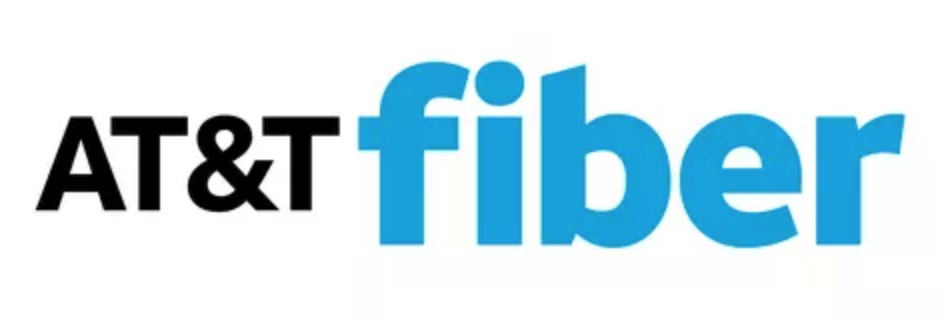If you’re comparing internet plans in an AT&T service area, chances are you’ve come across the acronym “IPBB.”
The term “IPBB” is commonly used by AT&T to market their DSL internet services. IPBB internet is faster than legacy DSL, capable of speeds in the 25–100 Mbps range. However, it’s not as fast as cable, and it’s slower than AT&T’s Fiber internet plans.
In other words, IPBB is simply a different way of saying “high-speed DSL internet.” If you need beginner-friendly help understanding how to choose between IPBB and other internet options like cable, see our internet service buying guide.
While AT&T offers faster fiber-optic internet, most of their coverage area is IPBB. You can check which is available at your address here. If you see options above 100 Mbps after entering your address, it means there is fiber at your home.
Check your address for AT&T Fiber View AT&T Internet Plans
IPBB Technical Definition
IPBB stands for “Internet Protocol Broadband” and is the acronym form of “IP Broadband,” a term used by AT&T to market their xDSL network internet plans. AT&T has been using this umbrella term since around 2014 to describe ADSL+, VDSL2, and other hybrid DSL variants, as well as ethernet services.
IPBB services are different from DSL in that they are delivered on fiber from the provider’s central office (CO) to a junction box or node in a neighborhood, which then makes the final leap to the subscriber building over legacy twisted-copper DSL lines.
Traditional DSL runs the copper line all the way from the central office, resulting in lower speed. IPBB internet shortens the distance data must travel over legacy copper lines, improving service speed and quality.

IPBB internet service from AT&T is particularly common in cities and suburbs such as Los Angeles or Pasadena, where AT&T is competing with hybrid fiber-coaxial networks from cable providers like Spectrum and Xfinity.
Some providers that resell service over AT&T lines, such as Sonic and Earthlink, may also use the designation “IPBB” to describe their service.
Overall, the concept of IPBB and Hybrid Fiber-Coaxial service is very similar: bring high-bandwidth fiber lines close to customers, then switch over to legacy copper lines, which are already installed and dropped to buildings.
This type of internet service can also be called “Fiber to the node” or “Fiber to the curb,” since it brings the fiber line closer to the customer before switching over to older copper lines.
In fact, AT&T sales agents will often use this term when describing IPBB plans — which can cause some confusion for consumers who believe they are signing up for a “Fiber To The Home” plan.
They also used the term “U-Verse” to describe their IPBB services, although the U-Verse brand name has now been retired in favor of “AT&T Internet,” “AT&T Fiber,” and other brand names.
Researching this topic for an article or project? Contact the author for custom insights and commentary on AT&T, broadband pricing and the digital divide.
Contact: research@connectcalifornia.com

IPBB FCC Definition
While the term IPBB seems to originate in AT&T marketing materials, the acronym has become commonly accepted and is likely to adopt wider use over coming years when describing hybrid DSL-Fiber networks. For example, the FCC acknowledged the term in their 2016 Measuring Broadband Report 1, listing IPBB as an accepted secondary product alongside AT&T DSL, when comparing download and upload speed of participating incumbent internet providers.

While other DSL providers such as Frontier and Verizon use similar hybrid technologies to bring fiber closer to customer addresses, these services are generally described as DSL — although they are registered under the same tech codes with the FCC to designate VDSL, ADSL2+, or symmetric DSL services. 2
IPBB vs DSL
IPBB is an umbrella term which includes several varieties of DSL, generally the ADSL2+ and VDSL variants which are common. AT&T will use the term IPBB to describe any DSL faster than “traditional DSL” connections, namely ADSL (which caps out at around 8 Mbps download).
If the speed offered to you is above 25 Mbps, you are likely in a VDSL service area. This is common in cities like Los Angeles 3, San Francisco, and Sacramento, where you can see AT&T’s VRADs (Video-Ready Access Devices) on the street. These boxes are where the fiber line terminates and switches over to AT&T’s DSL “telephone lines.”
IPBB vs Cable
IPBB generally describes hybrid fiber-DSL network setups. Cable companies like Spectrum, Xfinity, and Cox frequently use similar methods of delivering high-speed service in the last mile, bringing fiber lines near the customer and switching over to coaxial cable for the last mile (or last quarter-mile as the case may be).
The difference between IPBB and cable internet is that cable uses coaxial cable wires for the last mile, while IPBB uses older twisted-copper DSL lines in most cases. Coaxial cable internet service has less of a problem with “fade” compared to DSL, so the distance between your house and the node is far less critical.
Since both IPBB and cable are shared connections at the node, they don’t usually offer a static IP as you might be used to with traditional DSL or landline service. However both can provision one if you order business service for a home office.
IPBB vs Fiber
IPBB is “fiber-backed,” but that doesn’t mean it’s really a fiber internet connection on the same playing field as Verizon Fios, Google Fiber, and other “Fiber to the Home” services.
Fiber internet comes in two basic varieties:
- FTTH (Fiber to the Home): an internet connection in which the entire distance between your home and the provider’s core network is over fiber-optic lines.
- FTTN (Fiber to the Node): an internet connection in which the fiber terminates near the customer, and makes the last hop over legacy copper lines (or even wireless in some cases).
- FTTC (Fiber to the Curb): an internet connection in which the fiber line terminates within 1,000 feet of the subscriber address, resulting in a very short final hop and corresponding higher bandwidth capability for customers.
IPBB is generally used to describe xDSL services, meaning that it is not fiber — although it may be a hybrid fiber service such as Fiber to the Node.
IPBB vs Fusion Broadband
The term IPBB is also sometimes used by providers who resell services either wholly or in part over AT&T’s network. For example, Sonic in California sometimes sells plans “using AT&T’s IPBB network,” or “over Fusion IP Broadband” using AT&T’s “IP Network.” 4
Similar to IPBB, Fusion is an umbrella term for a variety of products somewhere on the scale between DSL and Fiber to the Home. Sonic may use the term to describe:
- Fusion DSL/LAN: plans provided directly from Sonic using VDSL or ADSL2+.
- Fusion IP Broadband: plans provided over AT&T’s Fiber to the Node network areas. These services go from the provider central office to a junction box on the curb, then make the final hop to the customer over copper DSL lines. In some cases, these lines may be upgraded to fiber, making this a Fiber to the Home (FTTH) service.
Frequently Asked Questions
What is IPBB internet?
IPBB internet is a term used to describe high-speed DSL services. IPBB internet is delivered over copper telephone lines, and can commonly deliver speeds in the 25–100 Mbps range. AT&T is the most common IPBB provider, and most other companies do not use the term.
Is IPBB internet fast?
IPBB internet is faster than legacy DSL, but has lower bandwidth than cable or fiber internet. Most IPBB plans are in the 25–100 Mbps download range, and are likely to have asymmetric rates with upload speeds in the 1–10 Mbps range.
What does AT&T IPBB mean?
AT&T uses the term IPBB to describe their high-speed DSL plans. IPBB includes a variety of hybrid DSL variants like VDSL2 and ADSL+ that use fiber to the node to deliver higher speeds than legacy pure-copper DSL.
-
https://www.fcc.gov/reports-research/reports/measuring-broadband-america/measuring-fixed-broadband-report-2016 ↩
-
https://www.fcc.gov/general/technology-codes-used-fixed-broadband-deployment-data ↩
-
https://www.prnewswire.com/news-releases/dsl-extreme-and-sonicnet-partner-to-bring-innovative-fusion-broadband–phone-service-to-los-angeles-189014331.html ↩





